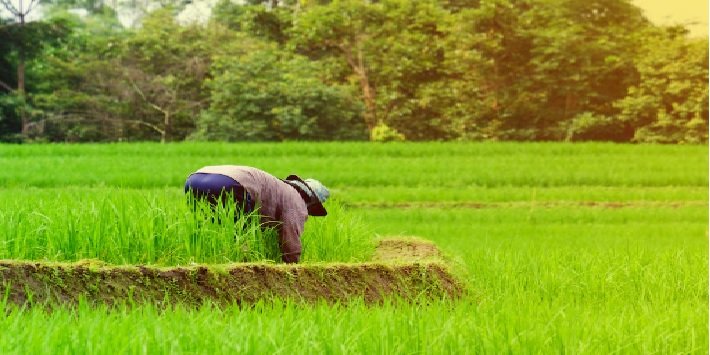Hybrid Paddy Acreage Likely to Rise This Season
07-Aug-2025 12:09 PM

New Delhi. During the current Kharif season, the production area of hybrid variety of paddy is expected to increase because farmers are showing good interest in its cultivation. Actually, the yield rate of hybrid paddy is high, due to which farmers get better income.
This time a good increase is being seen in the sale of hybrid paddy seeds. Although in most parts of the country, priority is given to the cultivation of traditional varieties of paddy, but now the trend of hybrid has also started increasing rapidly.
According to the seed selling company, initial indications show that the production area of hybrid paddy can increase by 6 to 8 percent during the current Kharif season as compared to last year.
Farmers of Bangladesh and Sri Lanka are also showing interest in its cultivation. In the coming years, the scope of its area is expected to increase even more rapidly.
Its cost remains almost the same but the yield rate remains high, due to which the income of farmers increases. The rice of this paddy is very much liked in the domestic sector and its business level is also favorable.
According to official data, during the current Kharif season, compared to last year, the total production area of paddy in the country till August 1, 2025 jumped by 45.70 lakh hectares or 17 percent to 319.40 lakh hectares.
The total production area of paddy in India is around 430 lakh hectares, in which the share of area of hybrid variety is only around 6 percent.
Its use is increasing rapidly in the eastern part of the country and its share of area there has increased to around 15 percent. Its area is also increasing in the southern states.
Although this time the expected increase in the production area of hybrid paddy is not being seen in Uttar Pradesh and Bihar, but there are signs of increase in area in Jharkhand, Chhattisgarh, Madhya Pradesh, Odisha and Gujarat.
Farmers' inclination towards its cultivation is also increasing in Nepal. The yield rate of hybrid paddy is 15-20 percent higher than normal varieties and its crop also has more capacity to tolerate adverse weather and disease-insect attacks.
